How Long Does Alcohol Stay In Your System?
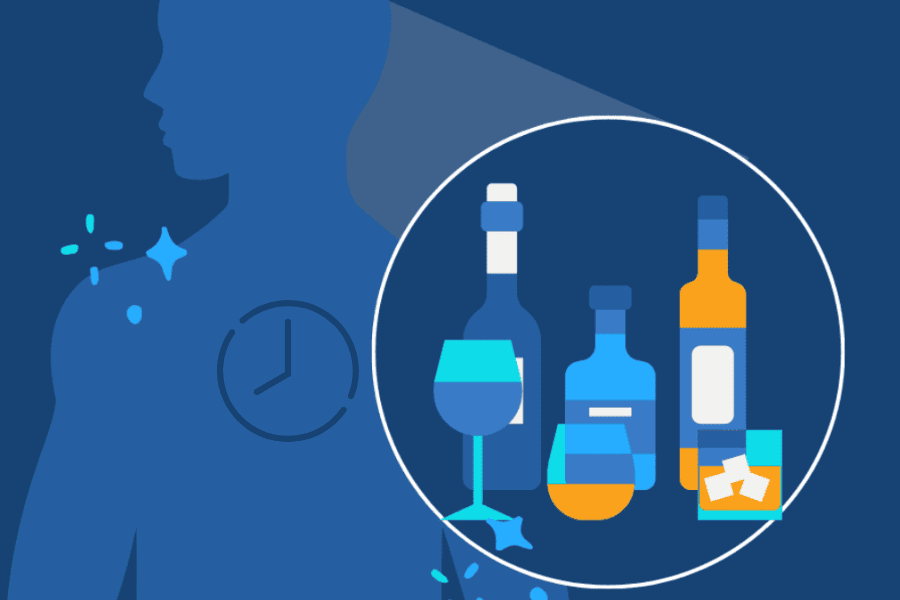

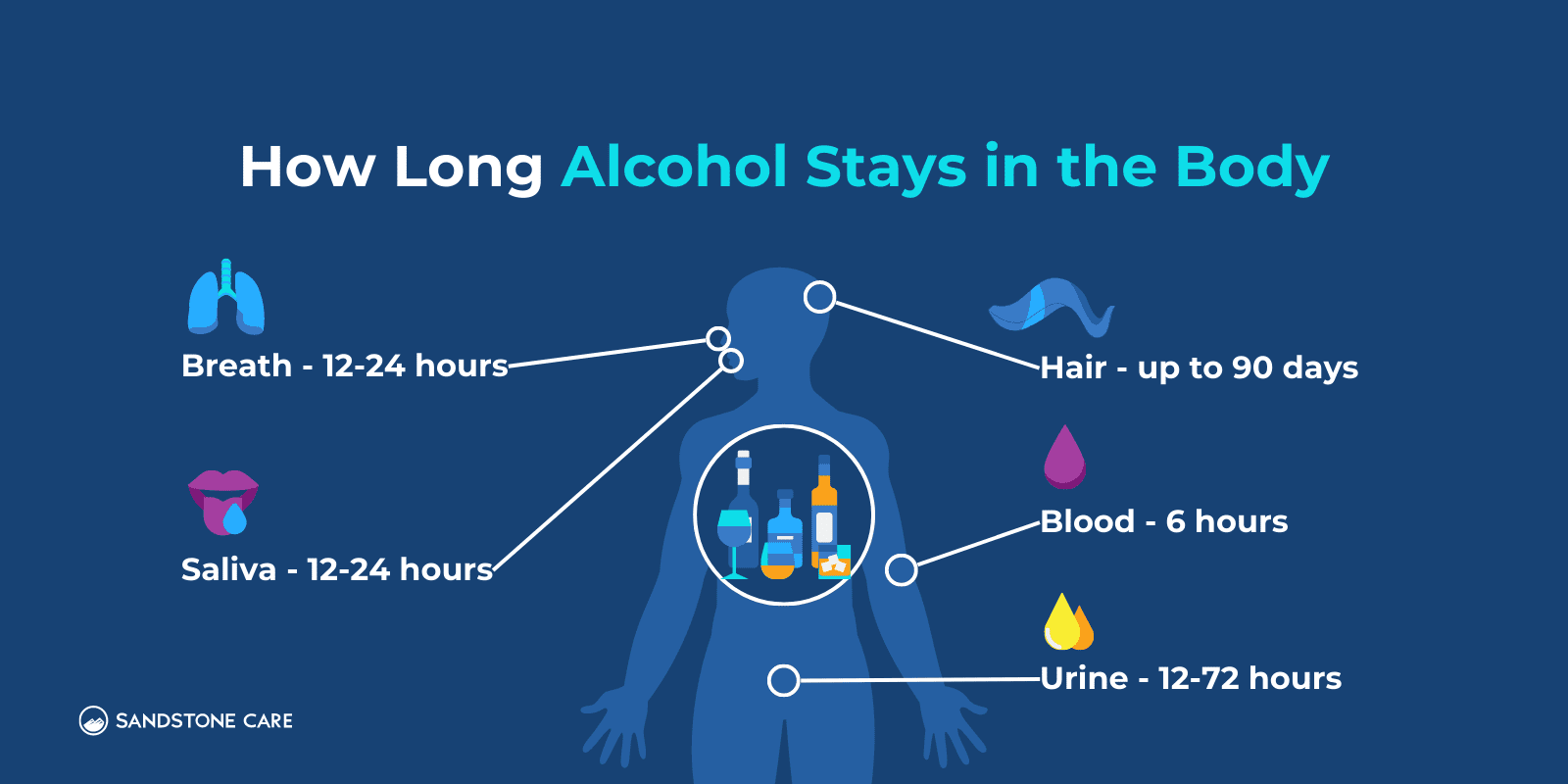
The length of time alcohol stays in a person’s system can depend on a variety of different factors, including the body system and the type of test being used to detect alcohol.
For example, different body systems have a different amount of time alcohol stays in the system like:
Also, alcohol has a half-life of around 4 to 5 hours, meaning that’s how long it takes for your system to eliminate half of it.
Different types of alcohol have different alcohol contents, which can affect how quickly a person can feel its effects.
Although generally speaking, a person will feel the effects of alcohol within 15 to 45 minutes of drinking.
For example, beer has a lower alcohol content compared to liquor like tequila or rum. So, if a person drinks one standard drink of liquor compared to one standard drink of beer, they will most likely feel the effects of the liquor faster.
The length of time it takes for the effects of alcohol to kick in also depends on how heavily a person is drinking.
The NIAAA defines binge drinking as a pattern of excessive alcohol use that brings a person’s BAC to 0.08%. Typically, this is about 5 standard drinks for a male and 4 standard drinks for a female within 2 hours.
If a person is just sipping on a drink, they probably won’t feel the effects of alcohol as fast as they would if they were drinking higher quantities at a faster pace.
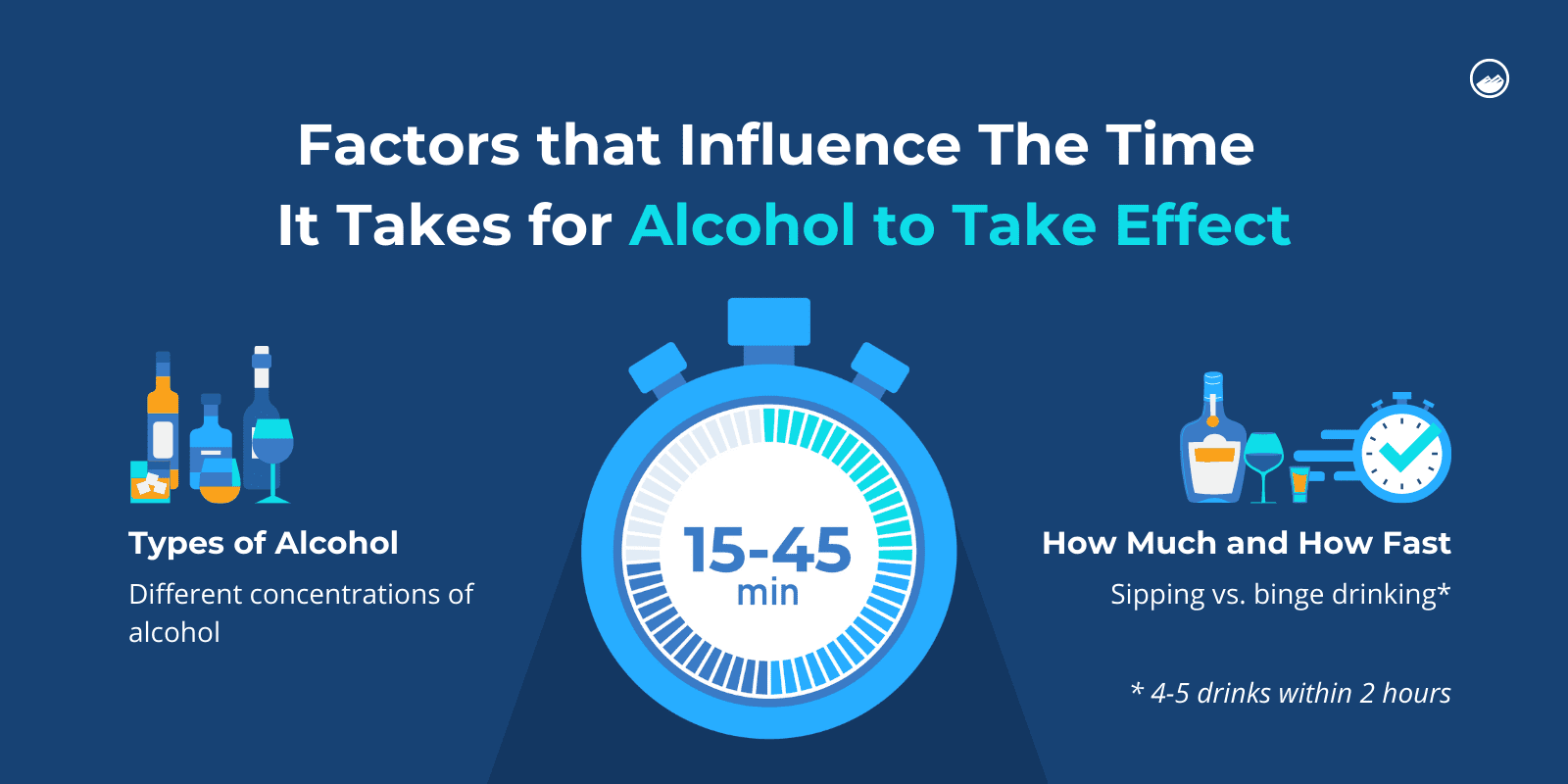
Common signs that may indicate a person is drunk can include:
Alcohol poisoning can also occur when a person drinks large amounts of alcohol in a short period of time.
The effects of alcohol poisoning can be extremely dangerous and, in some cases, life-threatening.
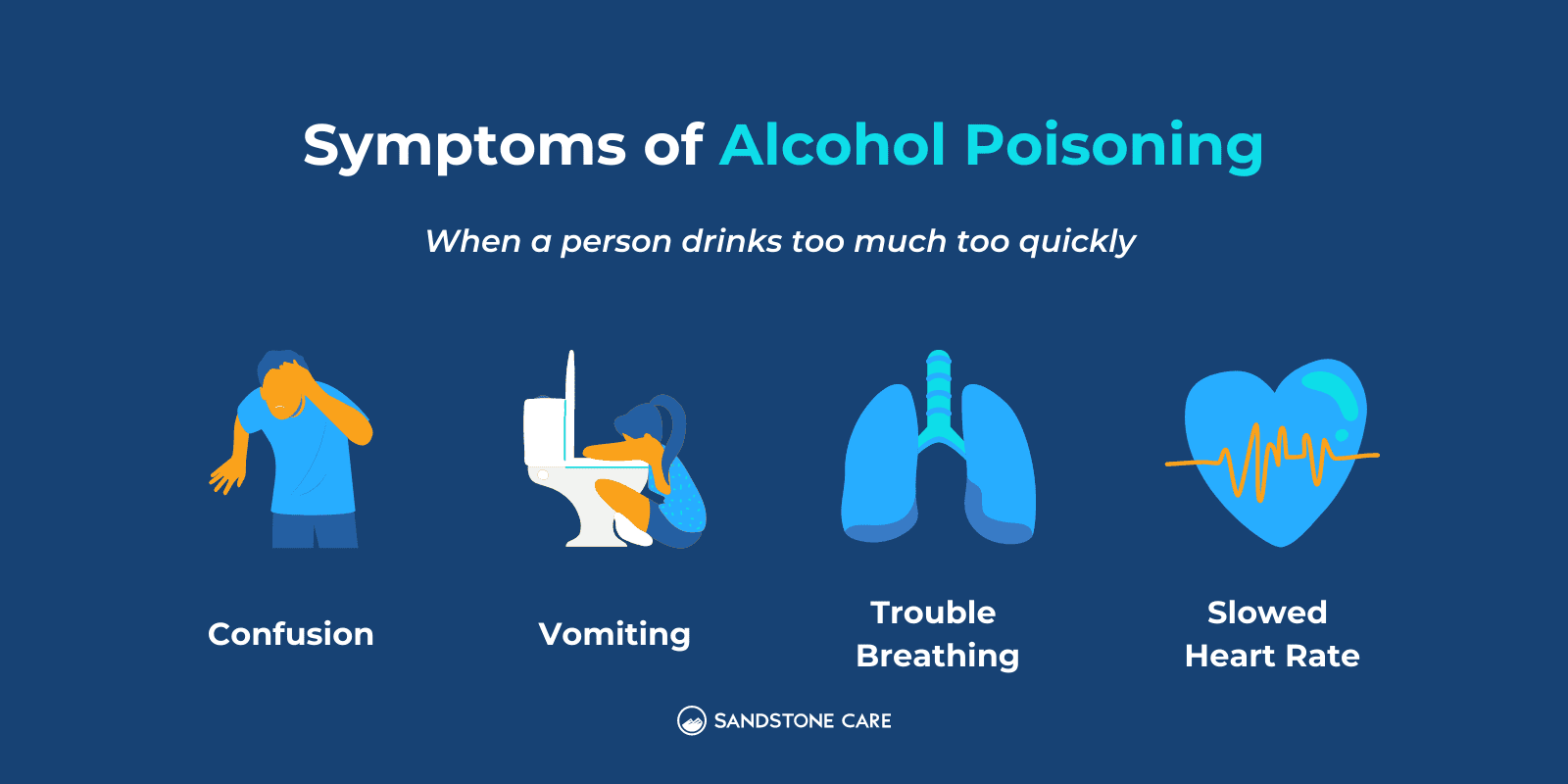
Signs of alcohol overdose or alcohol poisoning can include:
If you believe someone is experiencing alcohol poisoning, seek help right away and call 911.

Alcohol consumption can cause effects on the brain even with just 1 or 2 drinks.
Over time, long-term alcohol use can lead to changes in brain function, including confusion, impaired motor skills, and an impacted ability in decision-making.
Additionally, individuals who engage in heavy drinking are also at increased risk of heart problems, liver problems, cancer, and a weakened immune system.
Alcohol can also have a significant impact on a person’s mental health. Alcohol can affect a person’s mood and sleep, as well as contribute to mental health problems like anxiety and depression.
Sometimes, people use alcohol as an unhealthy coping mechanism for underlying mental health problems or difficult feelings. However, in doing so, they are worsening their symptoms and creating a cycle that can be very hard to get out of.
Alcohol is mainly metabolized in the body through the liver.
When a person consumes alcohol, it is absorbed into the blood from the stomach and intestines.
Then, it is broken down by two main enzymes, alcohol dehydrogenase (ADH) and aldehyde dehydrogenase (ALDH).
A small amount of alcohol is not metabolized but is eliminated through the breath and urine, which is how many blood alcohol level tests are done.
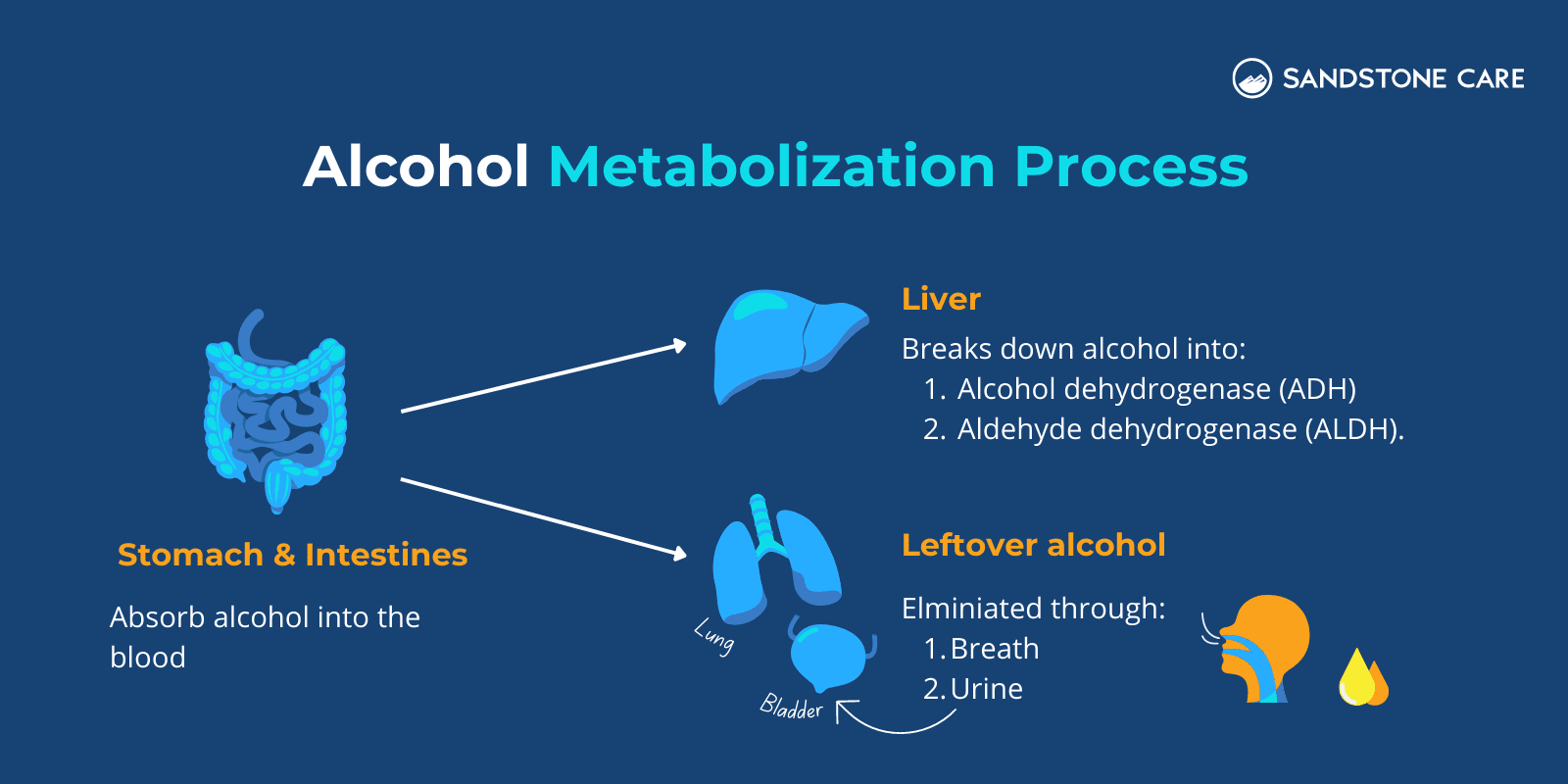
Yes, every person’s body metabolizes differently.
Some may have a faster metabolism, while others might be slower.
The way a person metabolizes alcohol can depend on a number of different factors, like genetics, weight, gender, what type of alcohol a person is drinking, medications you are taking, if you have food in your stomach, and others.
When a person digests alcohol, some of it is metabolized into fat, and the other part of it gets split into acetate.
The fat is then stored in the body, and the acetate is used for energy.
No, alcohol does not metabolize into sugar.
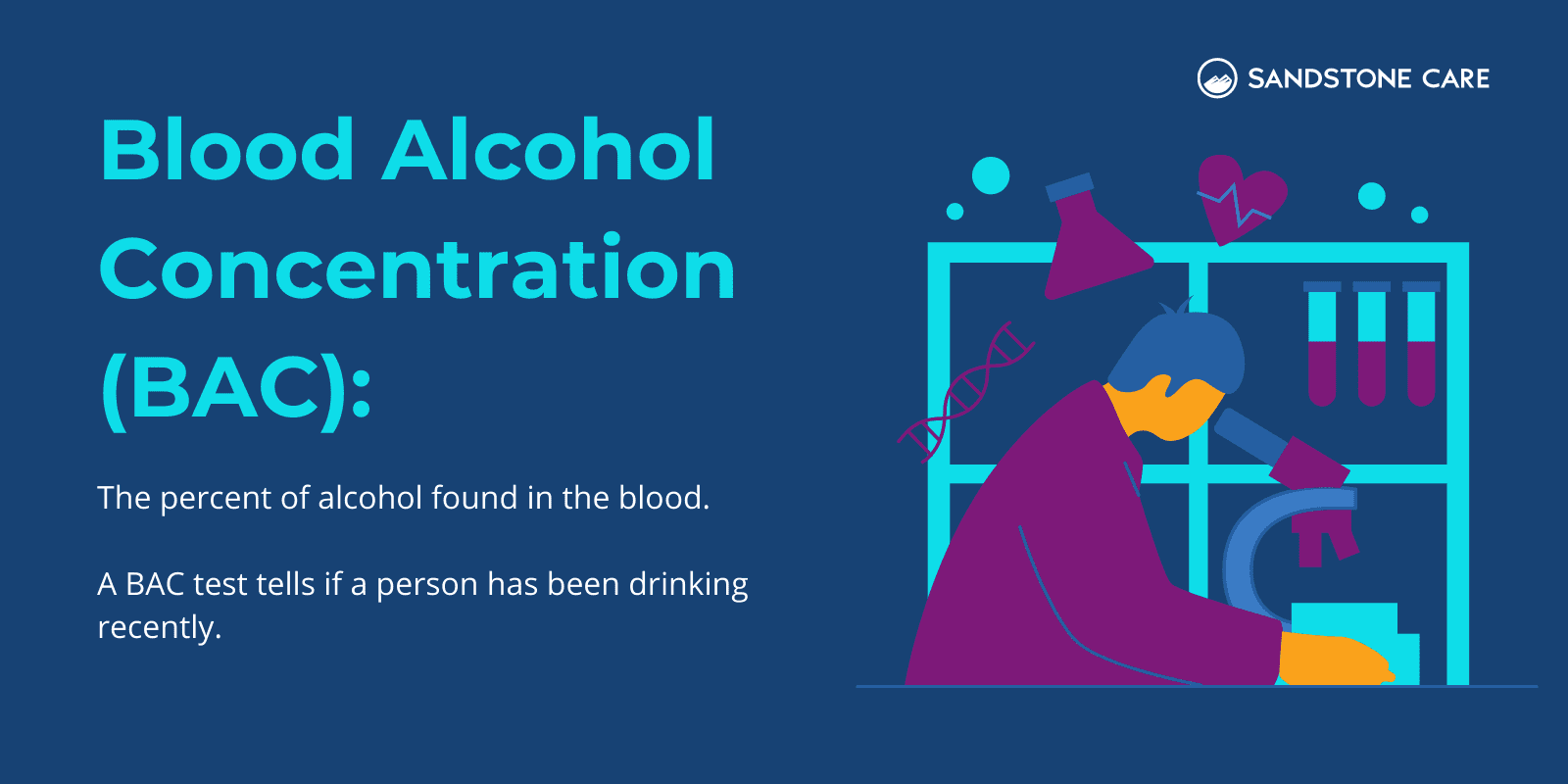
Blood alcohol concentration (BAC) is the percent of alcohol found in the blood.
Alcohol is also called ethanol, which is the main ingredient of alcoholic drinks like beer, wine, and liquor.
A BAC test is commonly used to tell if a person has been drinking recently.
When a person drinks alcohol faster than their liver can break it down, their blood alcohol level increases, and they will begin to feel drunk.
A BAC test may be used for different reasons, including:
If a person is in recovery from alcohol addiction, BAC tests may be used to see if the person has been sober recently.
In the United States, it is illegal to drive at or above .08% BAC. When a person is at that level, you are considered legally impaired and cannot drive.
At .10% to .12%, a person is physically impaired and usually experiences slurred speech.
Anything above .13% is considered quite high, and a person will often lose their coordination, have blurred vision, or become confused and disoriented.
.30 to .39% blood alcohol level is extremely dangerous and puts a person at higher risk of fatality.
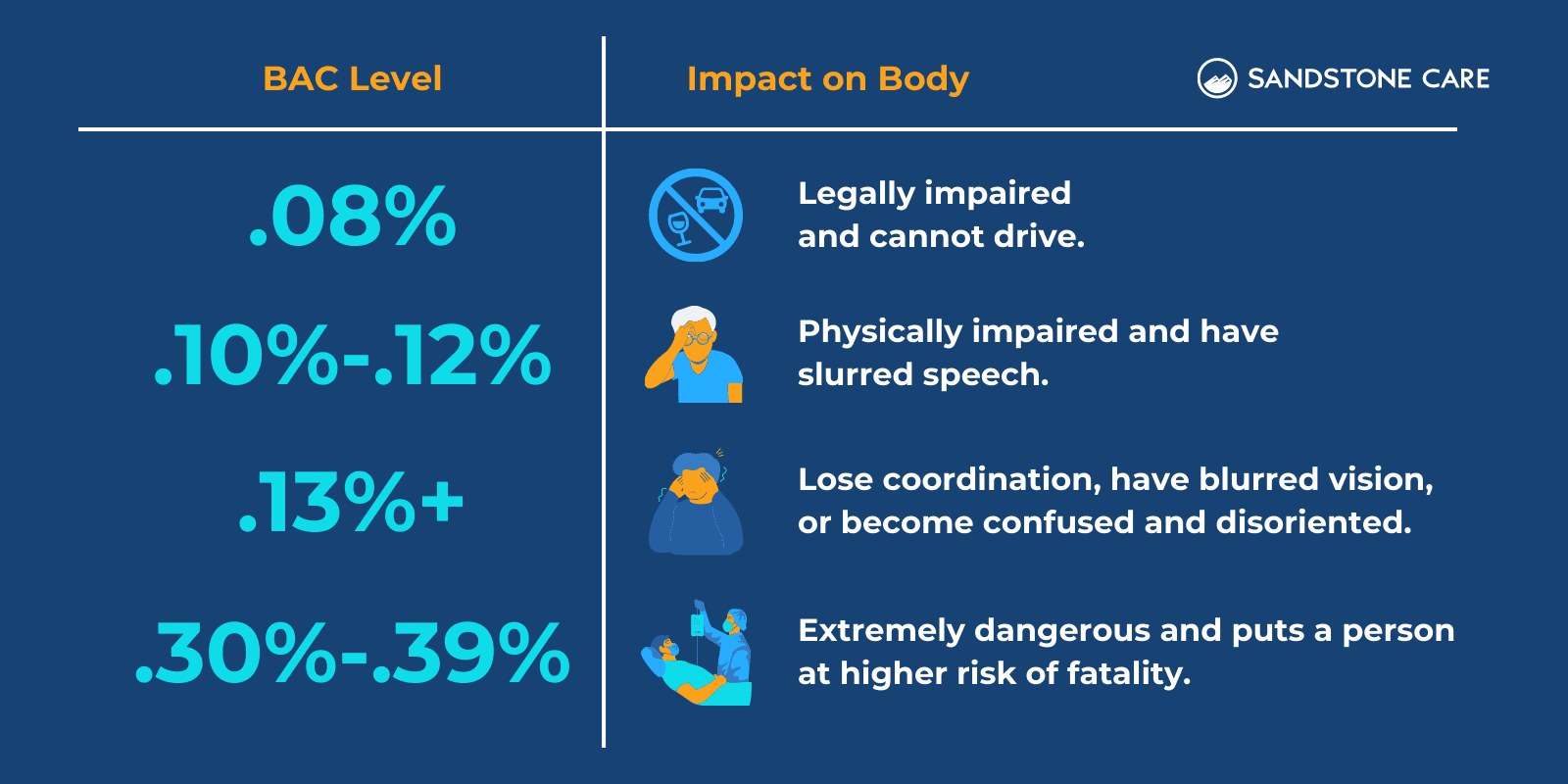
A person who is sober is at a 0.0 BAC.
To be considered legally intoxicated in the United States, a person’s BAC would be at or above 0.08%.
It generally only takes a couple of drinks for a person to get to 0.05% BAC; at this point, they can already be experiencing the impairing effects of alcohol.
According to the National Institute on Alcohol Abuse and Alcoholism, in the United States, about one “standard” drink contains approximately 14 grams of pure alcohol.
This usually comes to:
Common examples of standard drinks can include:
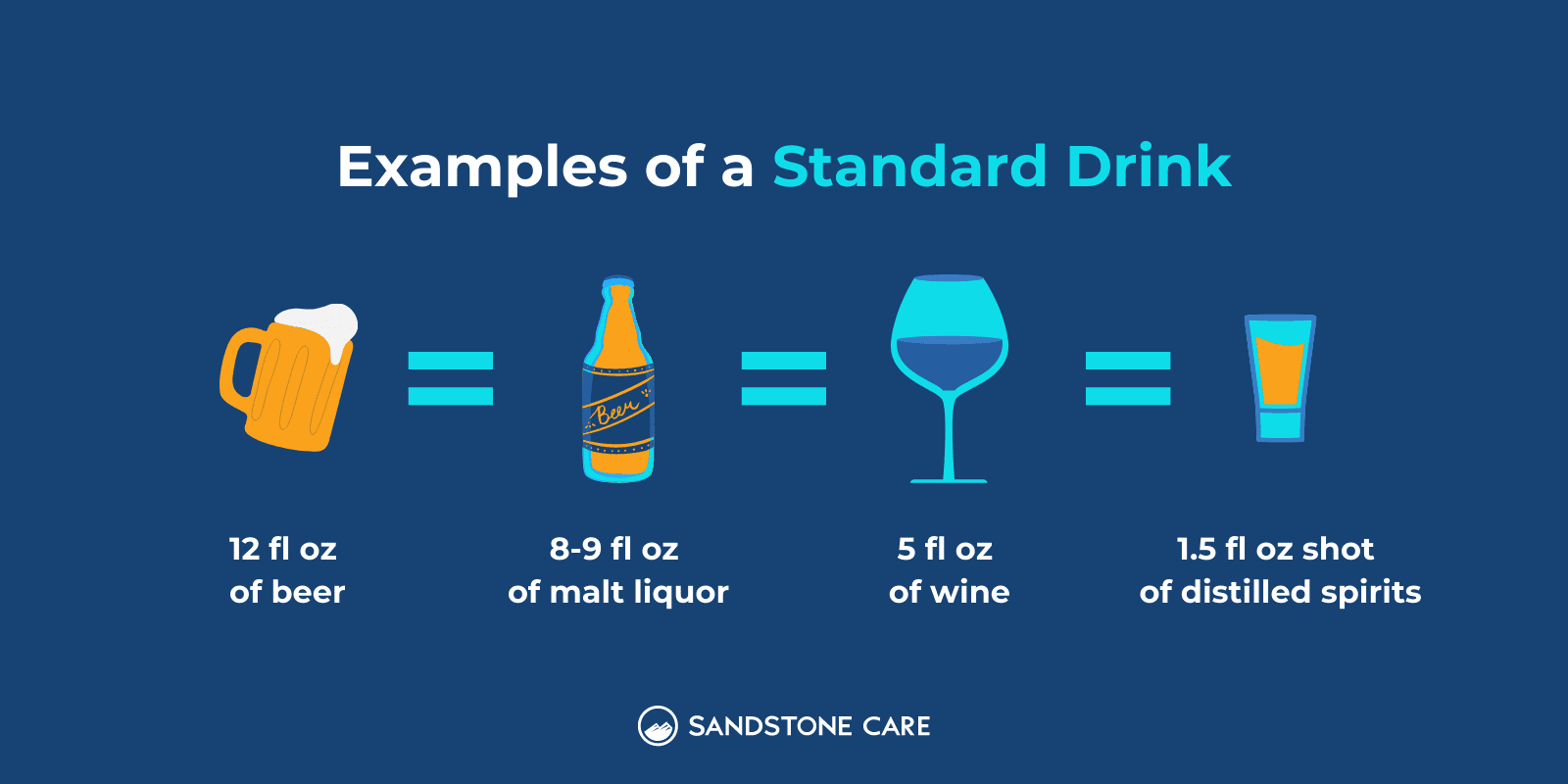
Alcohol is absorbed into the blood through the stomach and intestines.
How quickly it is absorbed depends on how fast the contents in the stomach move into the small intestine.
For example, if a person eats a full meal before drinking, the alcohol will be absorbed slower than if they were to drink on an empty stomach, and the person’s blood alcohol content (BAC) would be lower.
Typically, it takes a larger amount of alcohol to produce the same effects as women who drink less amount.
This can be because women typically have less body water than men who are of comparable body weight, making the alcohol more diluted in men’s blood compared to women’s.
There is also a difference in enzymes that metabolize alcohol in women’s bodies, so it generally doesn’t metabolize as fast, and the alcohol stays in their bodies for a longer time.
Alcohol’s effect on the central nervous system (CNS) is dependent on how much alcohol is in your blood and how much blood you have.
When a person has more water in their blood, the more diluted the alcohol will be.
In general, the less a person weighs or, the smaller the body size, the less blood and water they have. So, a smaller person may have a higher ratio of alcohol in their blood compared to someone heavier.
Additionally, a lighter person may also feel the effects of alcohol quicker than someone heavier who is drinking the same amount as them.
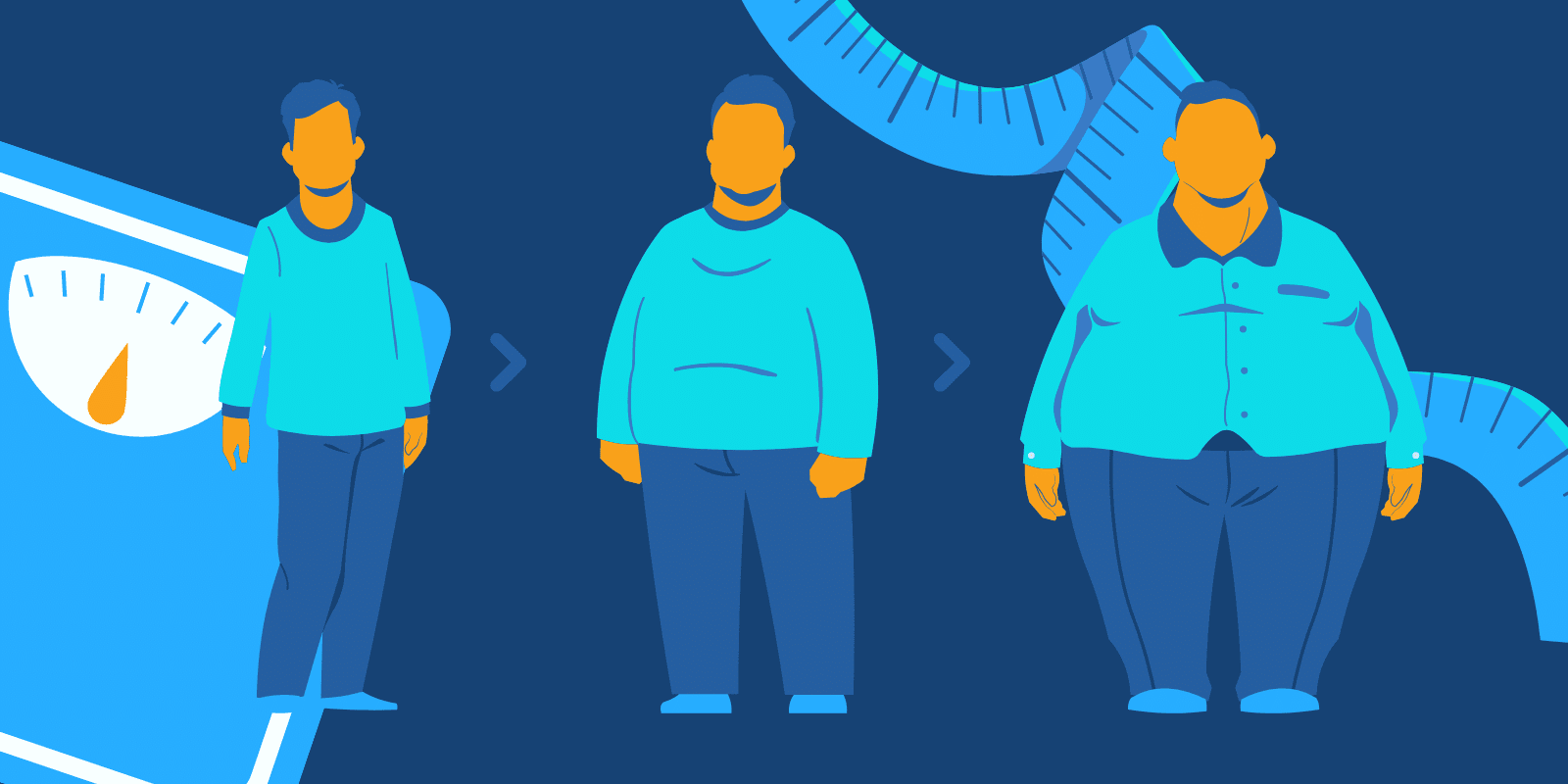
Mixing alcohol with other substances can be extremely dangerous and cause serious harmful effects.
When a person mixes alcohol with other substances, they interact with each other and alter each substance’s effects.
Some side effects a person may experience when they mix alcohol with other substances can include:
According to the NIAAA, mixing alcohol with medications can also put a person at risk of internal bleeding, heart problems, and difficulty breathing.
Mixing other substances with alcohol can also put a person at a higher risk of accidental overdose.
The effects of mixing substances with alcohol can be extremely unpredictable.
A tolerance develops when a person’s body gets so used to a substance or alcohol over time that it needs more and more of it to achieve the same effects.
A person with an alcohol tolerance would need a higher BAC than someone without a tolerance to experience the same effects.
Some people are under the misconception that building a tolerance keeps a person from experiencing the negative effects of alcohol or other substances, when in reality, the more of a substance they use, the more damage they are doing to their mental and physical health.
A person with a tolerance often needs to detox to rid the body of harmful substances. However, it is important to detox safely with the help of a medical professional.
Tolerance is not the same as a substance use disorder or addiction. However, tolerance can quickly lead to dependence which can develop into an addiction.
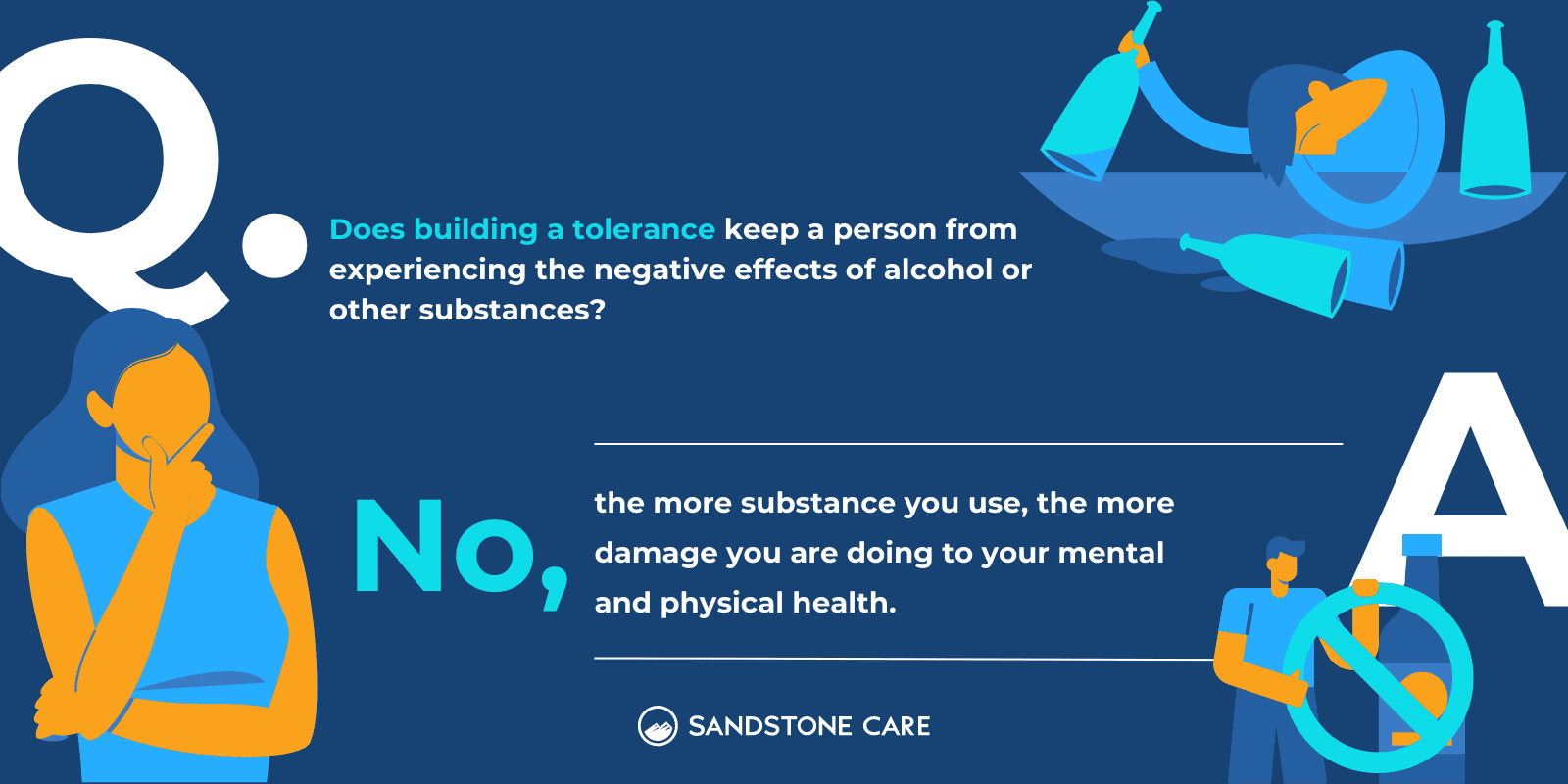
Alcohol can have an effect on your hormone levels.
Additionally, the hormonal changes that women experience during their menstrual cycle may affect their alcohol metabolism and the way their body processes alcohol.
This can make a woman feel the effects of alcohol faster and impact how long alcohol stays in their body.
The length of time it takes for a drink to wear off can depend on a number of factors.
Generally, it is said that one standard drink takes about one hour to metabolize.
However, if a person weighs less and is younger than another individual and they are drinking the same amount at the same pace, it may take longer for a drink to wear off because of factors like age and weight.
A person cannot make themselves sober up quicker. The only way to sober up is with time.
However, some people may do things to make them feel more awake or to help them feel better the next morning.
One of the main things that many people find to be the most helpful is by staying hydrated and drinking water.
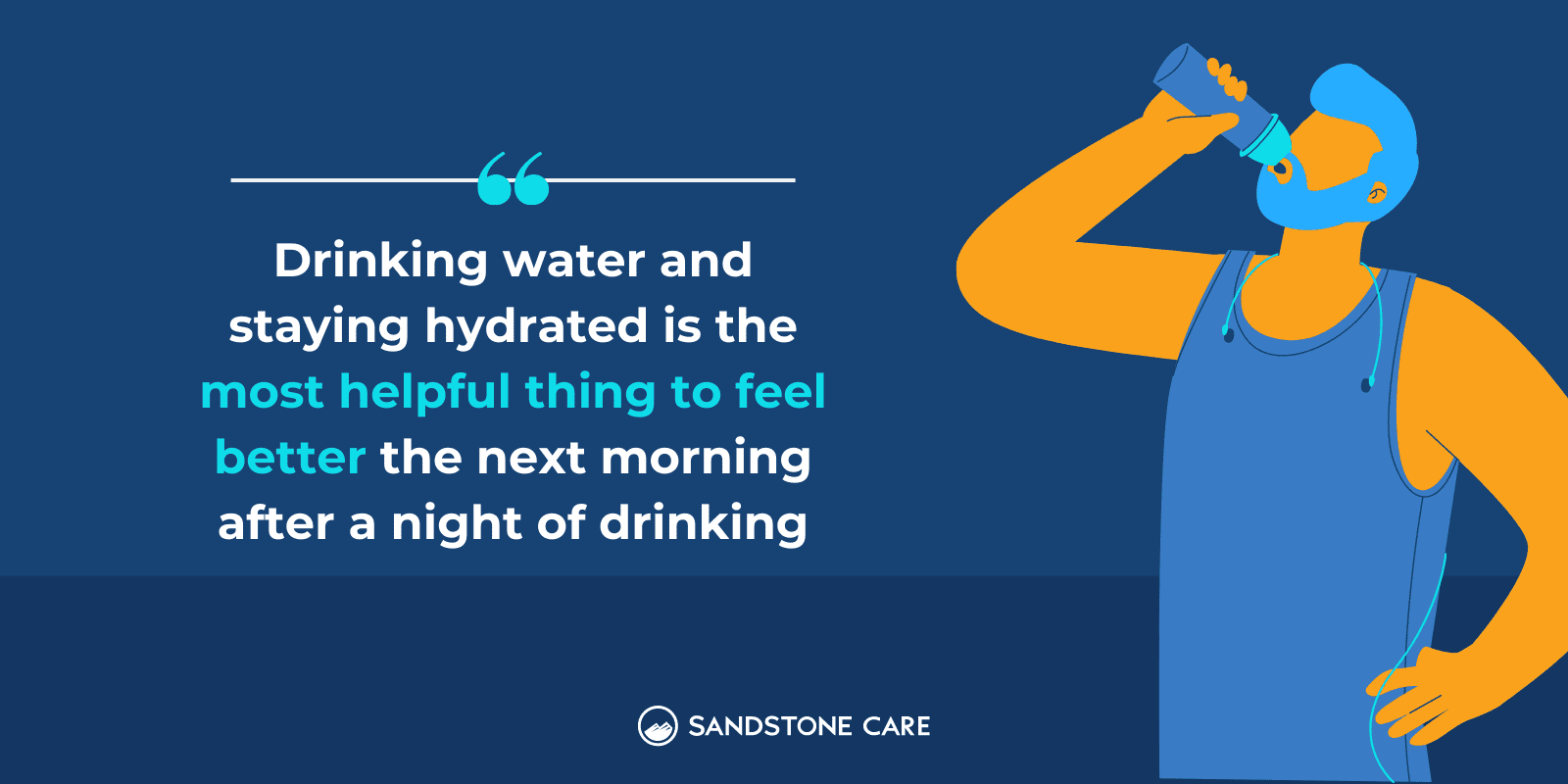
A bottle of red wine commonly has about 7 and a half to 8 standard drinks per bottle.
Given this information, two bottles of wine can take up to 15 hours to leave your system.
2 bottles of wine is a significantly large amount of alcohol, especially to drink on one occasion.
Tests used to check alcohol use can include blood alcohol levels, breathalyzer results, breath tests, and urine tests.
Sometimes, hair and saliva tests may be used for alcohol or other drugs.
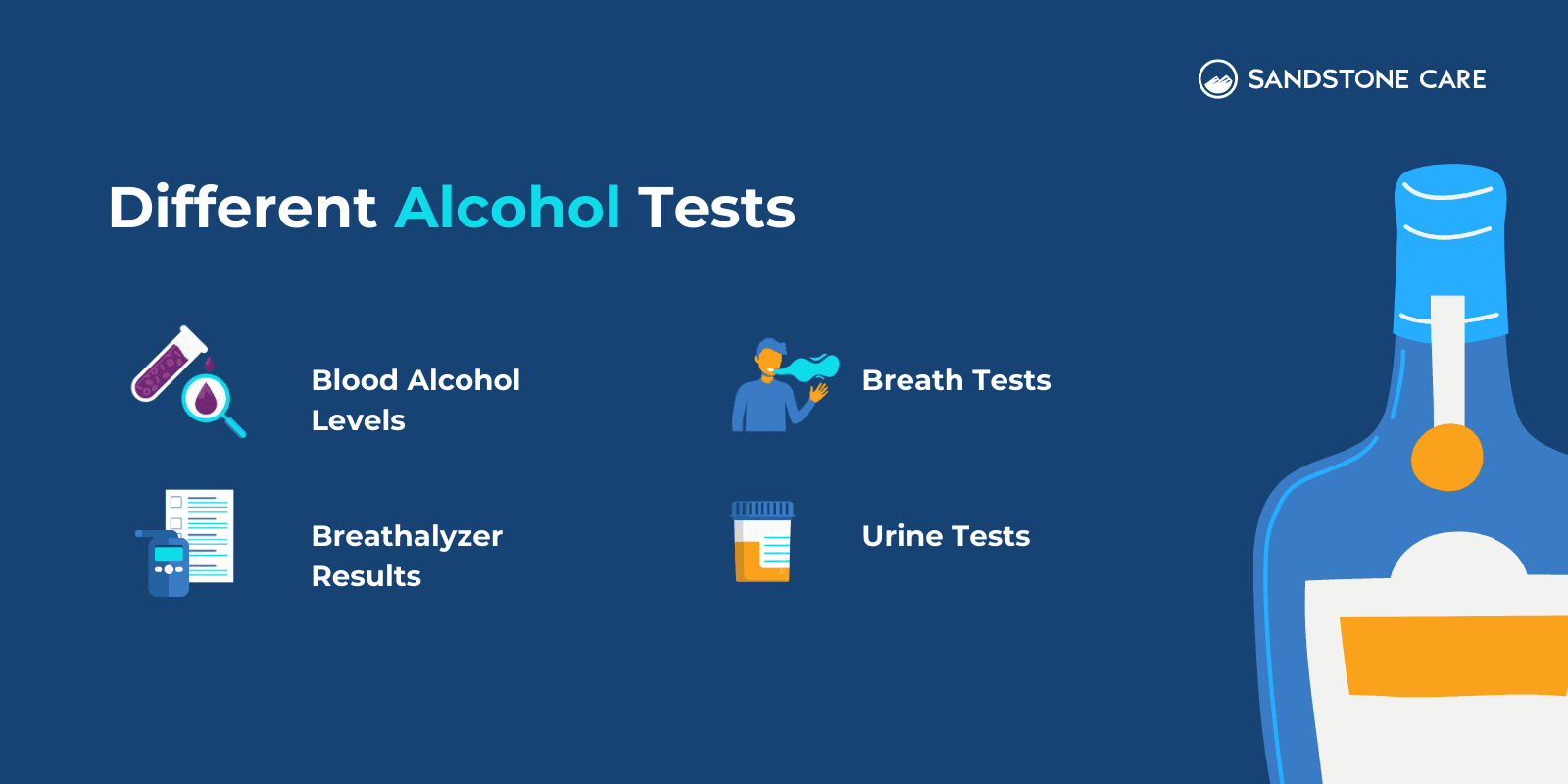
Depending on the test, it can detect alcohol anywhere from 6 hours to 90 days.
It usually only takes a few minutes to perform these tests.
Passing an alcohol test in 48 hours can depend on a variety of different factors, including how heavily a person is drinking.
If a person wasn’t engaging in heavy drinking, they might pass an alcohol test in 48 hours, but if they were, an alcohol test would likely detect it in 48 hours.
It also depends on how fast their body metabolizes alcohol.
Alcohol can usually be detected 15 minutes from drinking for up to 24 hours on a breathalyzer.
Yes, blood alcohol content tests are commonly used to detect alcohol in the blood.
A blood test can generally detect alcohol for up to 6 hours after consumption.
FAQ
Our goal is to provide the most helpful information. Please reach out to us if you have any additional questions. We are here to help in any way we can.
Alcohol is mainly metabolized through the liver.
It generally takes to liver about 1 hour to metabolize one standard drink for men.
However, the length of time it takes for alcohol to wear off in the body can depend on a variety of different factors, including a person’s age, weight, and how often they drink.
Generally, a person should wait at least 1 hour for each standard drink.
However, if you are not sure if you should drive or not, chances are you shouldn’t drive, and you should stay on the cautious side.
0.05 is not necessarily considered a high blood alcohol level, but it can still have an effect on a person and cause impairment.
Legally, the BAC limit in the United States is .08. However, one study discusses the reasoning behind lowering the legal BAC limit to .05.
For most people, it takes 2 to 3 standard drinks within an hour to reach a BAC of .05, which can quickly cause impairment.
Depending on the kind of test being used, alcohol can still be detected in your system in 7 hours.
The safest decision is to not drive if you have been drinking.
There is a general saying that you should wait one hour per standard drink before driving. So, if a person had two beers, they should wait two hours before driving. However, it is hard to follow this “rule” because alcohol can really affect each person differently.
If you notice a loved one has been drinking and is thinking about driving home, make sure they do not get behind the wheel. You can offer to drive them home if you are sober, order them a ride, or call someone they trust to take them home.


We understand taking the first step is difficult. There is no shame or guilt in asking for help or more information. We are here to support you in any way we can.